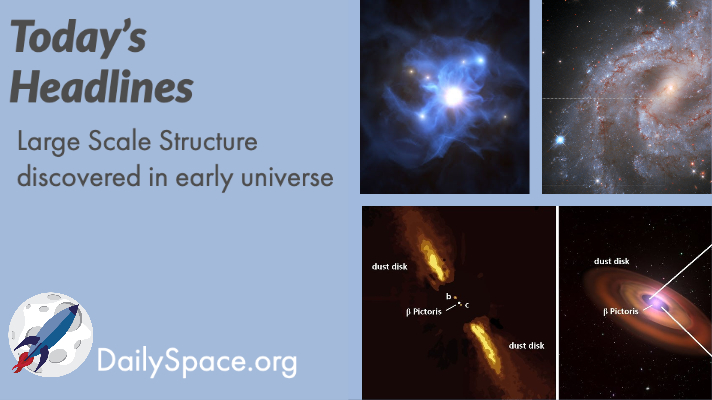
Oct 6, 2020 | Cosmology, Daily Space, Exoplanets, Galaxies, Quasar, Supernovae
Using huge telescopes, researchers have discovered a Large Scale Structure of six galaxies around a seventh galaxy with a supermassive black hole, back in the first billion years of the Universe. Plus Hubble captures a time-lapse of a fading supernova and beta Pictoris c is directly imaged.
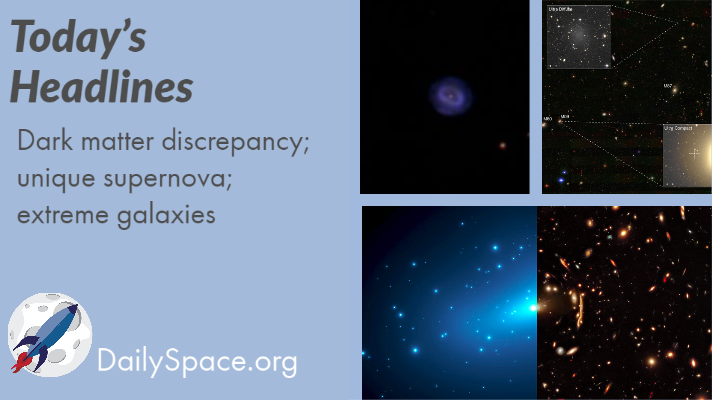
Sep 15, 2020 | Cosmology, Daily Space, Dark Matter, Galaxies, Guest Interview, Supernovae
Join us today as we look at how the Hubble Telescope may have solved the dark matter discrepancy. A research team has found a unique Type 1a supernova in the super-Chandrasekhar group of novae. Plus, all those extreme galaxies (large and small) seem to be in dense regions with a lot of interactions. Afterward, were joined by astrobiologist Dr. David Grinspoon to talk about his research into potential life on Venus.
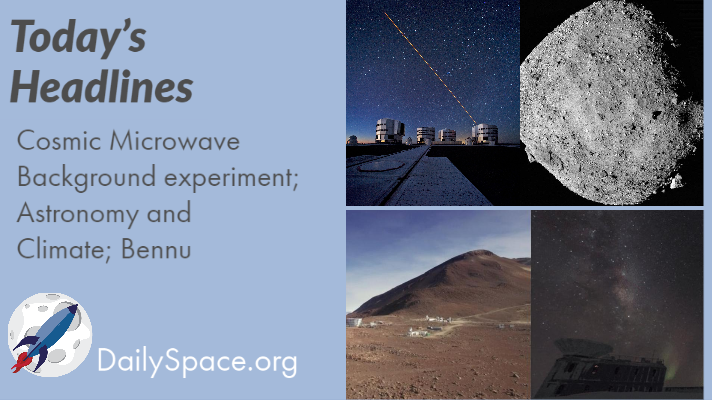
Sep 10, 2020 | Asteroids, Conferences, Cosmology, Daily Space, Earth, Observatories
Join us today as we look at a next-generation Cosmic Microwave Background experiment and then try to get a handle on how astronomy and climate interact. Also, Bennu is ejecting particles into space, because… Bennu.
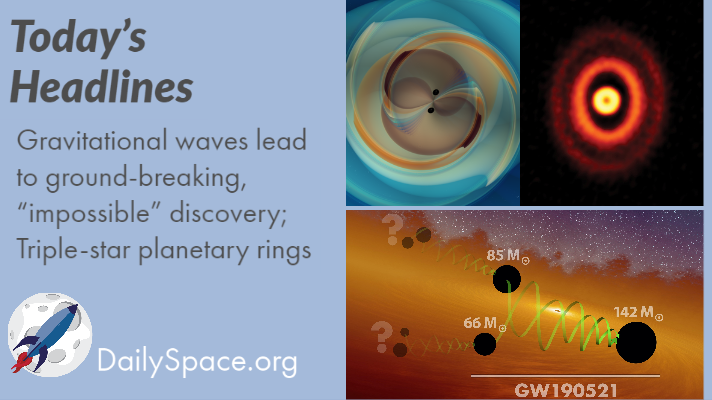
Sep 8, 2020 | Black Holes (Stellar), Cosmology, Daily Space, Exoplanets, Supermassive Black Holes
Join us today as we examine major news coming out last week from institutions analyzing data from the LIGO and Virgo gravitational wave detectors: the largest and farthest collision detected yet has led to the discovery of an “impossible” black hole. Plus a triple-star system has planetary rings and the camera that will be at the heart of the Vera Rubin Observatory takes its first images… of broccoli.

Aug 4, 2020 | Cosmology, Daily Space, Galaxies, Mars, Neutron Stars / Pulsars, Star Forming Region
Join us today as we talk about newly released research that suggests the waters on ancient Mars were subglacial and not free-flowing. Also, a black hole goes dormant and star formation goes wild. Meanwhile, computer models show that unequal neutron stars colliding may cause a big “bang” that can be detected on Earth.
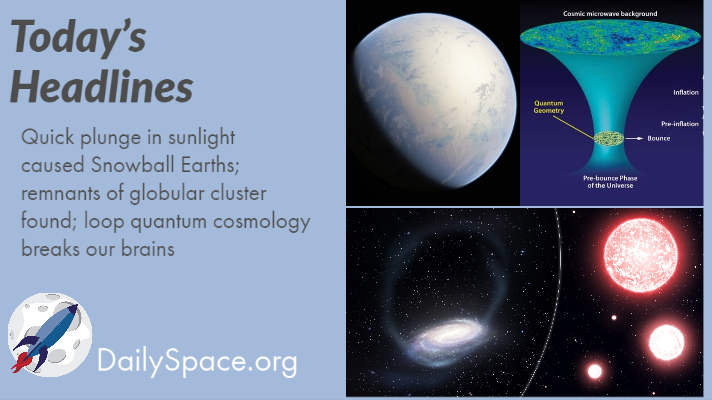
Jul 30, 2020 | Cosmology, Daily Space, Earth, Globular Cluster
Join us today as we go back in time and examine what caused Earth to become a snowball… more than once. We also take a look at a dismembered globular cluster found at the edge of the Milky Way. And finally, Dr. Pamela gets to explain loop quantum cosmology. Wish her luck!








 We record most shows live, on Twitch. Follow us today to get alerts when we go live.
We record most shows live, on Twitch. Follow us today to get alerts when we go live.